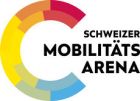Toyota Research Institute Rolls-out P4 Automated Driving Test Vehicle at CES
•Next-generation workhorse derived from all-new Lexus LS 500h flagship joins automated test fleet in spring
Next week, the bright lights of Las Vegas will once again shine on the Toyota Research Institute (TRI) when it introduces the TRI-P4 automated driving test vehicle on Jan. 7 at CES®. The P4 is based on the all-new fifth-generation Lexus LS flagship sedan and will be used in TRI's two-track Guardian and Chauffeur automated driving system development.
"Our Chauffeur development is focused on full autonomy, where the human is essentially removed from the driving equation, either completely in all environments, or within a restricted driving domain," said Ryan Eustice, senior vice president of automated driving at TRI. "Guardian, on the other hand, is being designed to amplify human performance behind the wheel, not replace it. The introduction of the new P4 platform will help us accelerate the development of both tracks when it joins our fleet this spring."
The P4 benefits from Lexus' new generation of chassis and steering control technology, which provides greater agility and allows for more responsive and smoother maneuvers during automated driving.
P4 adds two additional cameras to improve situational awareness on the sides and two new imaging sensors―one facing forward and one pointed to the rear―specifically designed for autonomous vehicles. The imaging sensors feature new chip technology with high dynamic range. The radar system has been optimized to improve the field of view, especially for close range detection around the vehicle perimeter. The LIDAR sensing system with eight scanning heads carries over from the previous test model, Platform 3.0, and morphs into the new vehicle design.
P4 is a much smarter research vehicle than its predecessor. With greater computing power, its systems can operate more machine learning algorithms in parallel for faster learning. It can process sensor inputs faster and react more quickly to the surrounding environment. All computing system power is now drawn from the vehicle's hybrid battery with the 12v battery now serving only as a backup.
10. Januar 2019
AUTOMAT VOR ORT: KONFERENZ AUTOMATICAR 2020
Am 16. September findet der Fachkongress AUTOMATICAR zum 2. Mal änlässlich der ...
»weiterlesenAUTOMAT vor Ort: Konferenz AUTOMATICAR
Am 12. April fand das erste Mal die von der Mobilitätsakademie des TCS organisierte ...
»weiterlesenAutomat vor Ort: EPTA Conference 2017
EPTA Conference 2017 „Shaping the Future of Mobility“ Luzern, Verkehrshaus, Mittwoch, 8. ...
»weiterlesenAuto-mat vor Ort: Automatische Shuttlebusse tpf
Am 22. September war www.auto-mat.ch live vor Ort, als die ersten beiden automatischen ...
»weiterlesen


